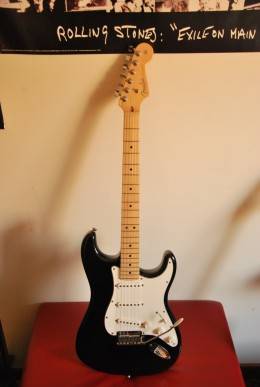I always consider a scale practice for speed and technical development. This is probably the first thing that comes to mind when I play, especially since practicing scales for classical guitar seems slightly misunderstood.
A classical guitarist plays different scale patterns. It’s a part of routine and exercises, especially for those practicing major and minor scales.
Whether it’s b major scale or another natural minor scale, it makes sense to keep an eye on scales. This is to always get a sound and music on point. In this blog, you will find out everything about scale practice and its benefits.
Why do Musicians Practice Classical Guitar Scale?
Perhaps you’re wondering why every musician would practice playing a classical guitar. One of the main reasons is to improve our fingers’ dexterity. It’s also to enhance the note and tonality or key signatures of our guitar’s fretboard.
In fact, you can use some frameworks to keep up with specific techniques and scale passages. Once a technique is tried, it can be incorporated into making a good sound or music.
Without a focus when you practice scales, then your time and lessons learned are all wasted. I realized that, as having a technique.
You’d become familiar with the scale itself. But the way I see it, there is quite an actual application of the scale in my piece. That said, it would defeat its purpose, especially the technical work.
Understanding a Guitar Scale
You’ve probably heard the word “scale” throughout your guitar journey. However, some musicians or players don’t exactly know how they work. At first, I didn’t know about that.
But later, I realized that guitar scales are sequences of notes that are organized. The scales are played in an ascending and descending order to help you build dexterity and finger strength.
Playing guitar scales also makes me more familiar with notes on my fretboard. It also helped me develop my music theory and gave me a framework to create melodies for my original songs.
So, if you want to keep up with your minor scale or rhythmic patterns, you must try all the exercises thoroughly. That way, you will know your way on your fretboard.
Advantages When You Practice Scales
There are elements of techniques to get into the process of classical guitar scales. Out of all the plays I had on the classical guitar, I realized that scales provide an efficient combination of techniques.
The combination is so special, and it’s something I don’t always find in any other exercises. Also, scales provide technical challenges found in the classical guitar repertoire.
The scales allow me to work on patterns and elements away from music. That way, I could prevent myself from treating repertoire mechanically or technically.
Other benefits when you practice scales are:
- Shifting my left-hand fingers
- Enhance speed
- Alteration of my right hand
- Left-hand independence
- Learning how string crossing works
- Tone and sound production
- Articulations
- Fingerboard mastering
- Perfect my rhythm
- Speed
- Rest stroke and free stroke
How do I Practice Scales?
You must be certain about what you are working or playing on. Before you start playing with your finger, you need to assign a function. This goal is for a certain scale, as not everyone is doing this.
The functions I practiced are diminuendo or crescendo and staccato. Using a scale to keep up with the technical aspect is as diverse as imagination. But these are some examples of guitar scales that even beginners can follow.
Three Examples of Guitar Scale
- G Major Scale
You can always play with this scale on a single string only. I also follow the two-whole, half-step, three-whole, or half-step formula.
Take note: using all six strings to fret the note properly is also recommended. It would also help me build strength in my pinkie finger.
- E Harmonic Minor Scale
I usually use the E Harmonic Minor Scale in jazz, classical, and metal lessons. It could spice up my solos. Musicians will know the E harmonic minor scales, which can be played on High E strings.
It goes from an open position to the second, third, to the fifth fret, to the seventh fret, until the twelfth fret. I always find it easy to play this scale.
- C Major Scale
The C Major Scale does not come with flats or sharps. That’s why it’s so easy to remember. The notes are easy to understand; that’s why it’s ideal if you’re composing. And since this scale is easy to understand, it’s more commonly played on open strings to fret notes.
Key Takeaway
The scales are extraordinary. They combine a technique or elements of left and right-hand fingering techniques. They also give variations to keep up with what every classical guitarist needs. You can use them as tools to improve musical play or technical issues.
As musicians, we have to be certain about why we practice as scale. The rhythm, sound, speed, accuracy, dynamics, and so on are techniques that may work with scales.
What’s important is to master the lessons about a scale. You can get benefits that you will surely appreciate in time.



